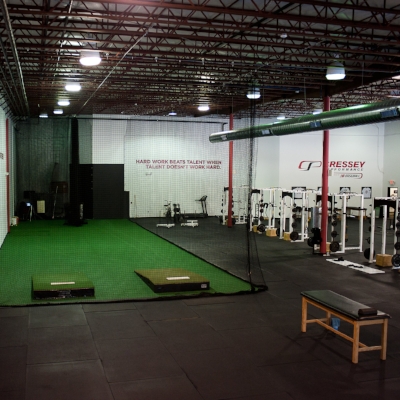It’s the same story at just about every gym…
The team is stacked with great coaches, yet every new client wants to know if and when they’ll be working with the owner.
How in the world are you supposed to scale your business if every person who walks through the door does so expecting to own a chunk of a single coach’s day? You can take comfort in knowing that I wrestle with this issue every single day of my professional work life.
We created this problem for ourselves at Cressey Sports Performance, choosing to put Eric’s name on the wall upon opening in 2007 (something I’ve written on in the past). As with every strategic decision we make, there are pros, and there are cons. Since one of the pros in this case is the fact that my business partner is a world-class generator of leads, I routinely find myself managing expectations for incoming clients surrounding his involvement in the assessment and training process.
“How should I manage expectations of parents and athletes who all think they should be working with me, the owner? ”
Today I want to explain how we attack almost eliminating this problem in both our Massachusetts and Florida facilities, specifically by sharing the three objectives we focus on to clearly convey an important message: The CSP product is the sum of many parts, and those parts happen to be a collection of exceptional coaches.
Here goes…
1. We Position multiple team members as the faces of our social media strategy
Gone are the days of glorifying a single personality in our informational content. Sure, Eric still publishes educational material, but he’s just one of the many faces you’ll see when tracking our output on a platform like Instagram.
Say hello to Kyle — Contender for the title of best beard on the CSP staff (also an arm-care enthusiast)
Concepts, visuals, and captions for Infographics are generated by full-time staff members. Ideas and lessons shared during staff in-service by coaches not named Eric are showcased in blogs, on youtube, and throughout the campaigns that draw attention to our internship program. Additionally, areas of expertise are showcased in the form of insights from our Pitching Coordinators, manual therapy tips and tidbits from our on-site LMT and PT, and more.
Speaking of areas of expertise...
2. We need to “have a guy” (not named Eric) for everything
Until opening our second facility in Florida in late-2014, Eric handled nearly 100% of the assessment scenarios involving unique injury histories and complex programming scenarios. There were shoes to fill when he left, as kids in Massachusetts didn’t suddenly stop tearing ACL’s and UCL’s.
We realized that we were in need of areas of expertise across our team, so we went to work on positioning coaches as experts in extremely specific realms. We needed an ACL rehab specialist. We needed an elbow and shoulder guy. We needed someone who understood how to handle a braced athlete bouncing back from a spondy.
Gone were the days of me saying: “Sure, Eric can take care of that.” I needed a new approach, and the most effective one turned out to be having the ability to tell a parent: “I’ve got just the guy for your son who recently had a Tommy John. In fact, I’ve got a coach on our team who has been in the operating room to observe the procedure itself, giving him a complete understanding of what is going on in your son’s elbow, and what he will be fighting through during the recovery process.”
When you stop to think about it, you’ll realize that having multiple team members with specific areas of expertise makes far more sense than positioning your gym owner as the jack of all trades and master of none. Sure, Eric knows more than enough to be dangerous on 99% of the scenarios that walk through our doors, but wouldn’t you rather work with the coach who has been religiously studying research journals, engaging with medical professionals, and attending related seminars on the exact topic of your son or daughter’s injury for months on end?
3. We did more than just Declare coaches as specialists
Claiming to be a lower-extremity specialist for the sake of positioning isn’t the same as actually being one. This is where the months of preparation in advance of Eric leaving for Florida came in. Identifying the appropriate staff members to take the reins on specific assessment and programming scenarios based on their background was the easy part. Actually accumulating the appropriate experience was another story.
Instead of bringing an intern in the room to assist with assessments, Eric took full-time staff members to be his second set of eyes and hands. When a guy with a recent labrum repair showed up in the assessment calendar, he grabbed our soon-to-be “shoulder guy” and dove into the screening process alongside him, taking a teaching hospital approach to employee development for months on end.
When not working directly with athletes, Eric was arranging for team members to meet and engage with orthopedic surgeons outside of our gym, helping them to network with appropriate practitioners in the area, and assigning ample reading materials for consumption. The process was slow moving and arduous, but continues to be a necessity for our operation. After all, I can’t “sell” these employees as credible experts if I don’t truly believe them to be just that, so the education process is one that never actually ends.
Every gym has a perceived “best coach”
Something tells me that this challenge is one that you face on a daily basis if you own a gym and employ other coaches. It’s great that you’ve established the credibility that results in being an in-demand coach, but your business will never scale if you allow this mentality to thrive inside of your operation.
Glorifying a single staff member only serves to stifle your ability to increase client capacity, so you’re better off spreading around the rave reviews in favor of a far healthier bottom line.
_____
Thanks for reading! If you enjoyed this, make sure to say hello on Instagram or Twitter, and subscribe to my newsletter here.



































